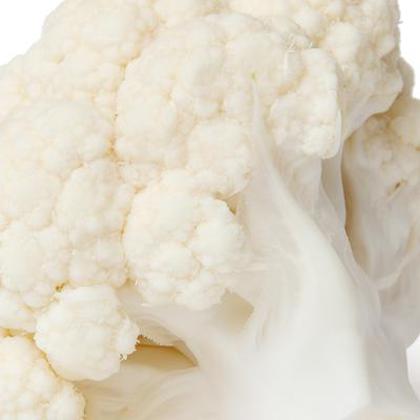Showing results for 'Cauliflower'
close
Cauliflower

Cauliflower is a large white vegetable from the Vrassicaceae family. It is eaten grilled, roasted, steamed, fried or smashed. It is also commonly used in soups .
Cauliflower Pairs With:
Food Item
Flavor Affinity Level

Did you know there are 265 food flavor pairings in my database for Cauliflower available. What you are seeing above is a random list of 30 items which pair with Cauliflower.
For the entire list, beautifully formatted, enter your email address and click the download button below, then I'll email it to you as a PDF.
Cauliflower Properties:
| Food Property | Type | Description |
|---|---|---|
| Flavor Profile | Sweet | Cauliflower has a mild sweetness, especially when roasted or sautéed. |
| Bitter | Cauliflower can have a slight bitterness, especially when overcooked. | |
| Umami | Cauliflower has a subtle umami flavor, which intensifies when roasted or caramelized. | |
| Texture | Firmness | Cauliflower is firm and sturdy when raw, but becomes softer when cooked. |
| Moisture | Cauliflower contains a high water content, which contributes to its crisp texture when raw. | |
| Nutritional Value | Macronutrients | Cauliflower is low in carbohydrates and fat, but a good source of protein. |
| Micronutrients | Cauliflower is rich in vitamins C and K, as well as folate and potassium. | |
| Fiber | Cauliflower is a good source of dietary fiber, which aids in digestion and promotes satiety. | |
| Color | Natural Pigments | Cauliflower naturally contains white pigments, giving it its characteristic color. |
| Aroma | Volatile Compounds | Cauliflower releases sulfur compounds when cooked, giving it a distinct aroma. |
| Chemical Composition | Acidity/Alkalinity (pH) | Cauliflower is slightly alkaline in nature. |
| Cooking Behavior | Heat Conductivity | Cauliflower cooks relatively quickly and evenly, as it conducts heat well. |
| Water Retention | Cauliflower retains moisture well when cooked properly. | |
| Oil Absorption | Cauliflower can absorb oil when sautéed or roasted, enhancing its flavor. |
Food Pairing App - Version 1.2.0
